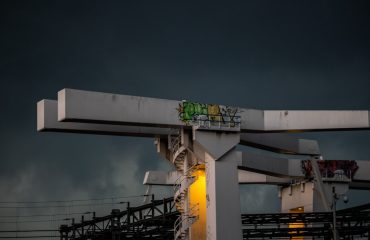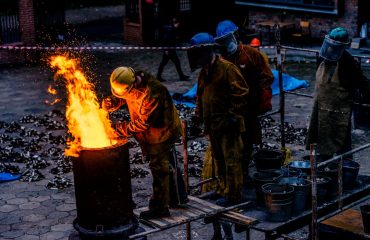Radiographic inspection (RT) is a crucial non-destructive testing (NDT) method used to detect internal flaws and imperfections in various materials, including pipes. This powerful technique utilizes penetrating radiation to create images revealing hidden defects that could compromise structural integrity and lead to costly failures. This comprehensive guide will delve into the intricacies of radiographic inspection in pipes, exploring its applications, techniques, advantages, limitations, and safety protocols.
Understanding the Principles of Radiographic Pipe Inspection
Radiographic inspection relies on the principle of differential absorption of radiation. A source of ionizing radiation, typically X-rays or gamma rays, is directed at the pipe. The radiation passes through the pipe, and the intensity of the radiation reaching the film or detector on the other side varies depending on the material’s density and thickness. Denser areas, like welds or metallic inclusions, absorb more radiation, resulting in lighter areas on the radiograph. Conversely, thinner areas or voids absorb less radiation, resulting in darker areas. By analyzing these variations in intensity, inspectors can identify internal flaws such as cracks, porosity, inclusions, and corrosion.
Common Techniques Used in Radiographic Pipe Inspection
Several techniques are employed in radiographic pipe inspection, each suited to specific pipe sizes, materials, and defect types. These include:
- Double-wall exposure: This technique uses a single exposure to image both walls of the pipe simultaneously. It’s efficient but requires careful positioning to ensure both walls are adequately imaged.
- Single-wall exposure: This method images one wall of the pipe at a time, providing greater detail and allowing for easier interpretation of complex defects. It is particularly useful for thicker pipes or those with complex geometries.
- Panoramic radiography: This technique utilizes specialized equipment to image long sections of pipe in a single exposure, ideal for inspecting long pipelines or large diameter pipes.
- Computed radiography (CR) and digital radiography (DR): These digital techniques replace traditional film with digital detectors, offering advantages such as immediate image visualization, enhanced image quality, and easier data management.
Applications of Radiographic Pipe Inspection in Various Industries
Radiographic inspection plays a vital role in ensuring the safety and reliability of pipelines across diverse industries. Some key applications include:
- Oil and gas industry: Inspecting welds in pipelines transporting hydrocarbons is crucial for preventing leaks and environmental disasters.
- Chemical processing: RT ensures the integrity of pipelines handling corrosive chemicals, preventing leaks and maintaining operational safety.
- Power generation: Radiographic inspection is used to assess the condition of pipes in nuclear power plants and other power generation facilities.
- Water and wastewater treatment: RT helps maintain the integrity of pipelines carrying water and wastewater, preventing leaks and contamination.
- Construction: Inspection of welded joints in structural steel pipes used in building construction ensures structural integrity.
Advantages and Limitations of Radiographic Pipe Inspection
Radiographic inspection offers several advantages, including its ability to detect internal flaws invisible to other NDT methods. However, it also has limitations:
Advantages:
- High sensitivity: Detects a wide range of defects, including small cracks and porosity.
- Permanent record: Radiographs provide a permanent record of the inspection, allowing for future reference and analysis.
- Versatile: Applicable to various pipe materials, sizes, and configurations.
- Comprehensive: Can image large areas of pipe in a single exposure (depending on the technique).
Limitations:
- Radiation safety concerns: Requires strict adherence to safety protocols and trained personnel.
- Cost: Can be relatively expensive compared to some other NDT methods.
- Accessibility limitations: May not be suitable for inspecting pipes in confined or inaccessible locations.
- Interpretation expertise: Requires trained and experienced personnel to interpret the radiographs accurately.
Safety Procedures in Radiographic Pipe Inspection
Radiographic inspection involves ionizing radiation, posing potential health risks if safety protocols are not strictly followed. Key safety measures include:
- Radiation shielding: Using appropriate shielding materials to protect personnel from radiation exposure.
- Distance: Maintaining a safe distance from the radiation source during exposure.
- Time: Minimizing the time spent in the radiation field.
- Radiation monitoring: Regular monitoring of radiation levels using dosimeters and other monitoring equipment.
- Training and certification: Personnel involved in radiographic inspection must receive proper training and certification.
- Emergency procedures: Establishing clear emergency procedures in case of accidental exposure.
Adherence to these safety procedures is paramount to ensuring the well-being of inspectors and others in the vicinity.
Radiographic inspection is a powerful tool for ensuring the integrity of pipe systems across various industries. While it presents certain challenges, the benefits in terms of safety and cost savings far outweigh the limitations, making it an indispensable technique in modern pipeline inspection and maintenance.




